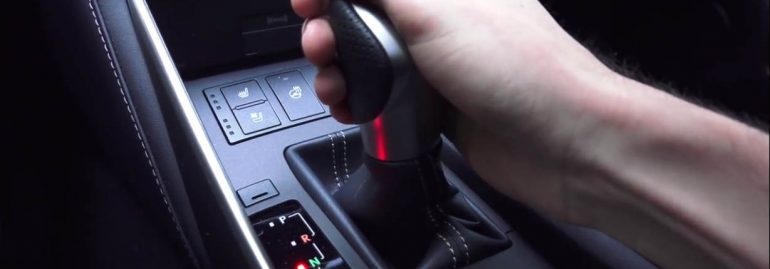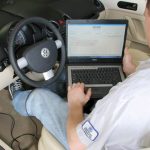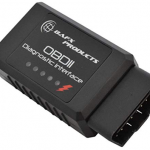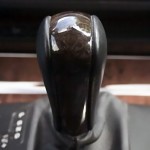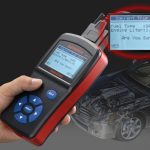Transcript:
In this video we are going to be about five thing you should never do in an automatic transmission vehicle and this is a kind of follow up to the video I did of…
Five things you should never do in manual transmission video.
And I think just as important is to understanding in what you shouldn’t be doing is understanding why?
So I bought some parts along. This is a part of torque converter and so we’re going to be looking at, you know kind of how mechanically automatic transmission works.
So that we can better understand, why we shouldn’t do certain things in them… which I think is just as important as understand what you shouldn’t be doing.
So the first one we’re going to be talking about is that you should never put your vehicle in neutral when you’re coasting down a hill.
And so the logic behind this may be that, you know, you can save fuel economy by putting it in neutral and coasting down a hill. And let’s say you’re on a tall hill, and about to go on a shorter hill.
If you put it in neutral, you can gain a lot of speed and gain enough speed to go over that smaller hill without, you know, getting on the gas and so you can save some fuel by doing that.
But the other thing is, when you do have it in gear and you’re coasting down a hill modern transmissions and modern vehicles, what they’ll do is that they’ll cut fuel to the engine.
So you’ll just use the wheels, which are connected to the transmission, and thus the engine. Because it’s in gear, to shut off the fuel injectors so that the wheels will be powering the engine.
And so in that case you won’t be using any fuel. So as you’re going down that hill you won’t be using any fuel. And you can see this on fuel economy indicators.
If you put it on neutral, it’ll read something a little bit lower and then if you put it in drive, then you can notice the instantaneous fuel economy will go up to the highest number that it can read.
Because it has shut off fuel from going in to the engine. Now the other reason you don’t want to do this, and there is really three reasons. Is that it kind of takes a bit of control out of your vehicle.
So when you’re in neutral, you only have the ability to slow your vehicle down. You no longer have the ability to speed up, because you’re not in gear. So you’re taking out part of your control from it.
And the third reason, if those aren’t good enough for you to not put it in neutral when you’re coasting down hill.
It is often illegal in states. So I started looking up the law in a bunch of different states, Not every state, but I found 15 states, and I will include links to all of these states’ laws in the video description.
But there is a huge list of states, Arizona , California, Colorado, Deleware , Georgia, Illinois, Michigan and so on.
You can go on these government websites and see the law where it says ‘Do not put it in neutral’, because you are taking yourself out of control of the vehicle.
So, you know, if those aren’t good enough reasons, one and two then the third reason, it might be illegal where you live.
So you know, look up your local laws, to figure that part out. But regardless, it could be illegal where you live.
Moving on to number two, whenever you’re changing directions in an automatic transmission vehicle, you wanna make sure to come to a stop before switching from drive to reverse, or from reverse to drive.
So backing up, come to a stop, then put it in drive, and then move along.
And so the reason why you want to do this is because, you’re using your brakes to stop the vehicle rather than your transmission.
Your transmission is designed to shift gears, your brakes on the other hand are designed to stop the vehicle.
So this is an automatic transmission band, and what this does is is it clamps down around the housing of a planetary gear set.
And when you do that, you alter the gearing of the planetary gear. So when you’re in reverse or drive this might be open, and then when you put it another one it’ll clamp down on a drum.
So this works a lot like a the reverse of a drum brake. So instead of pressing out like a drum brake, this squeezes down on a drum.
And so, what you’re doing when you change that direction is you’ll be using these bands, as well as clutches.
Automatic transmissions also have multi-plate clutches within them And so when you switch gears, these bands will clamp down to change the gearing.
And when it does that, you’re using this material here on this automatic transmission band to stop your car, rather than the brakes, which are easy to service and cheap to replace. Versus this part which was only $18 but very difficult to access.
Which is going to take you a lot of time to replace it, or a very expensive repair. So come to a stop, then put it in what gear you in to go in.
Number three we’re going to talk about launching your car. Now obviously, if you want your car to last as long as possible, and you want the maximum longevity out of your transmission, then you should never launch the vehicle. It is going to put a lot of strain and stress on it.
But there’s different methods I’ve seen people use, and some of them are kind of, you know are kind of dangerous and you should never do them.
So one of the methods I’ve seen that people have done is they’ll rev it up in neutral and then they’ll drop it into drive and then let that carry their car forward.
And so that’s kind of a dangerous way of launching your vehicle…. and we’re going to get into why using some parts.
So here we have a torque converter, and this is the pump, or the impeller, and so what you’re going to have is the engine which is going to be connected to a flex plate, and that flex plate is going to be connected to this.
So this has been cut off, so that we can see the inside of this torque converter, but know that this is always going to be rotating with the engine.
So this is the pump, or you could call it the impeller, and within this we have the stator which we’ll go ahead and set aside… and what that does is it reverses the direction of the fluid, when it’s transferring between one side from the pump to the turbine.
And so here we have the turbine, and so you can see an internal spline, there, and so this is what’s going to be rotating with the transmission.
So this will be splined with the transmission as the impeller rotates, it will force this turbine to rotate, and as the turbine rotates, it will rotate the transmission, and thus the wheels.
So this is a fluid coupling, and so what that allows you to do is have a difference in speed between your transmission and your engine.
So your engine can be rotating and your transmission can stay stationary, as I’m demonstrating here. So this is connected with the flex plate, and as that rotates, you can see the transmission can be held still.
So when you’re at a stop, that’s what will be happening this will be rotating, and the turbine will just be stationary, because it’s connected to your wheels, which are not moving.
When you launch and you rev it up in neutral, and then you put it into drive what you’re doing is you’re going to be having friction between this, this band… and the drum which it’s resting around, as that tries to clamp down to send power through it.
And so, you’re going to have clutches and bands within your automatic transmission that are going to try to be absorbing that power, but you’re going to have slip, because you’re sending so much power through it, and these are designed to shift gears, not to handle a launch.
And so you’re sending power through it, and you’re going to be wearing out this band… as I mentioned, it’s going to be very expensive to replace it.
So rather than putting it in neutral, revving it up, and then putting it in drive, which is just kind of crazy, what you want to do is put your foot on the brake, and put your foot on the gas, build up some pressure within this torque converter, so you’re putting a lot of torque to that impeller… or, to that turbine which is stationary, and then the second you let off the brake, you’re sending all the torque, and all of your clutches and bands are already locked up in the position they need to be, so you’re not going to have any slip.
Now, yes, you’re going to put a lot of strain on your transmission, and it’s not like a great thing to do for it, but it’s a lot less dangerous than putting it in neutral revving it up and then putting it into drive, and then letting the clutches and bands handle all that torque, and trying to get power to the wheels and spin your tires, rather than spin these bands, which will be very expensive to replace.
Moving on to number four… there’s no reason to put your car in neutral when you’re sitting at a stop light. It’s fine to leave it in drive, and that’s something some people will commonly do is to take it out of drive.
For several reasons they may think, okay, it’s putting a lot of stress on your transmission.
But, let’s think about that for a moment. If you’re sitting there with it in drive, so your engine is spinning, and my hand, which is touching the turbine, obviously isn’t moving.
So your engine is spinning, [the turbine] isn’t, so you’re putting some stress on the transmission. And yes, that’s absolutely true, you are doing that, but let’s think about it.
Once you let off the brake and you start accelerating, you’re putting a far greater force into that turbine to move your vehicle forward than if you’re just sitting there with your engine idling and it’s trying to put some of that energy into the turbine. So really, you’re not putting any additional stress on it.
It’s far less than you are when you’re actually accelerating, so it’s kind of crazy to think, “Oh, I shouldn’t do that.” The second thing some people will say, it can save fuel economy.
And when you are in drive, obviously you’re going to be putting some of that energy into trying to rotate this, and you’re rotating against an object which is stationary, whereas if you put it in neutral, it can spin much easier because you’re disconnecting from the transmission.
Well, the thing is there, you will tend to idle higher in neutral verses being in drive, but regardless it’s not going to be a big fuel economy difference.
I actually had a Volvo in which gave a live readout of your fuel economy while you’re sitting there at a stop light and it said it was using 0.3 gallons per hour.
So, if you think that you’re just going to sit at a stop light for, let’s say, 30 seconds, you do the math, that’s 0.0025 gallons to sit there at that stop light with it in drive… as I had it in that Volvo with the live readout.
So, you’re not really going to be using that much fuel. Now if you’re sitting in stop-and-go traffic, there’s a ton of cars, you’re surrounded, so there’s no need to get out of an emergency situation or anything like that really quickly …and you’re just stuck, you’re stopped in traffic, and you want to make sure that you’re going to get maximum fuel economy, just turn your car off.
If you’re just going to be sitting there, there’s cars all around you and it’s a safe time to do it, turn your car off and just let it sit there so you’re not using any fuel. Like, that’s the easy solution to saving fuel if that’s the reason why you put it in neutral from drive.
And then the other thing switching from neutral to drive, you might think, oh, there’s going to be less wear, things like that.
And you are going to be using these bands as you switch from neutral to drive to clamp down on the transmission.
Either way, it’s not going to be a lot of wear because your vehicle isn’t moving and there’s not a whole lot of energy being put into that transmission.
So, I wouldn’t really worry about wear of doing it from neutral to drive, but there’s really just no good reason to take it out of drive.
Just leave it in drive while you’re sitting there at the stop light, and you’re not putting any additional wear, and you’re not really going to be saving any fuel.
Moving on to number five, you should never put your vehicle into park until you’ve come to a complete stop. So, you should never put it into park while the vehicle is moving.
Now, here’s the thing. Most automatic transmissions, especially modern ones, will not allow you to do this, but it’s cool to understand why. When you put your vehicle in park, you’re applying a pawl, essentially a locking pin, into a gear which is connected to your transmission’s output shaft.
Your driven wheels are connected to the transmission output shaft, so when this is locked, your wheels cannot move.
Now, if you were to engage the parking pin while the vehicle is moving, and there weren’t systems to prevent this from happening, you could very easily shear the locking pin and break it, as it attempts to completely lock up a transmission in motion.
Either way, you’d be putting a huge amount of stress into your drivetrain and transmission. Now, I can’t really think of any scenarios where you might think it’s a good idea while you’re moving to put it in park, but let’s say you’re trying to come to a stop, and you can’t really figure out how.
You’ve got acceleration happening and you can’t prevent it; you’re throttle is stuck for some reason. The first thing you should do is firmly press your brakes.
Your brakes are always going to be able to out-power your engine.
Now, you may use up that vacuum assist, and so because of that you may need to press really hard in order to get the brakes to successfully work, because once you run out of brake assist from the vacuum pump and you’ve got full throttle, you’re going to lose that assist.
And so, you want to make sure you press that firmly. It may not seem like it’s working because you don’t have brake assist. You’ve got to push really firm. The other thing you can do is downshift.
So, as you downshift, you’ll start to slow the vehicle down, and so that’s another method of bringing your vehicle to a stop.
So, thank you guys for watching. If you have any questions or comments, feel free to leave those below. So I have this Peruvian mango box which I was using to store the torque converter in.
Who knew there were so many ways to eat a mango? You can eat it on a fork, cut the skin and peel it and, there you go, eat it on a fork. You can slice ’em, you can dice ’em, or you can eat it with a spoon. Amazing! Mango, such a versatile fruit, to get your vitamin C on.


